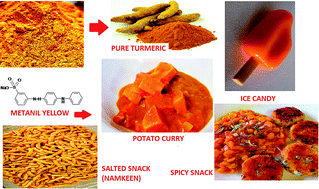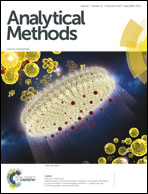A novel micellar chromatographic procedure for the determination of metanil yellow in foodstuffs
Abstract
A simple, sensitive, rapid and eco-friendly liquid chromatographic method was developed for the detection of a non-permitted food colour metanil yellow in raw as well as cooked foodstuffs. Metanil yellow (3-(4-anilinophenylazo) benzene sulfonic acid sodium salt), is a hazardous dye and a common adulterant used in turmeric powder and other yellow coloured food products. In the present work, metanil yellow was detected in various real food samples through direct injection micellar liquid chromatography without any pretreatment step. A C-18 column with a mobile phase containing 0.15 M sodium dodecyl sulphate (SDS) and 6% pentanol buffered to pH 3 was used. The detection was carried out at 427 nm. Metanil yellow eluted out at 3.5 minute without showing any matrix effect with linearity (r > 0.9999), and intraday and interday precision RSD (%) calculated to be around 1.80–2.81% and 1.92–2.91%, respectively. The limits of detection and quantification were found to be around 0.01 ppm and 0.05 ppm, respectively. The robustness study was also included as a part of method validation. The developed method proved to be reliable and sensitive for the determination of metanil yellow in real food samples.

- This article is part of the themed collection: Detecting food authenticity and integrity

 Please wait while we load your content...
Please wait while we load your content...